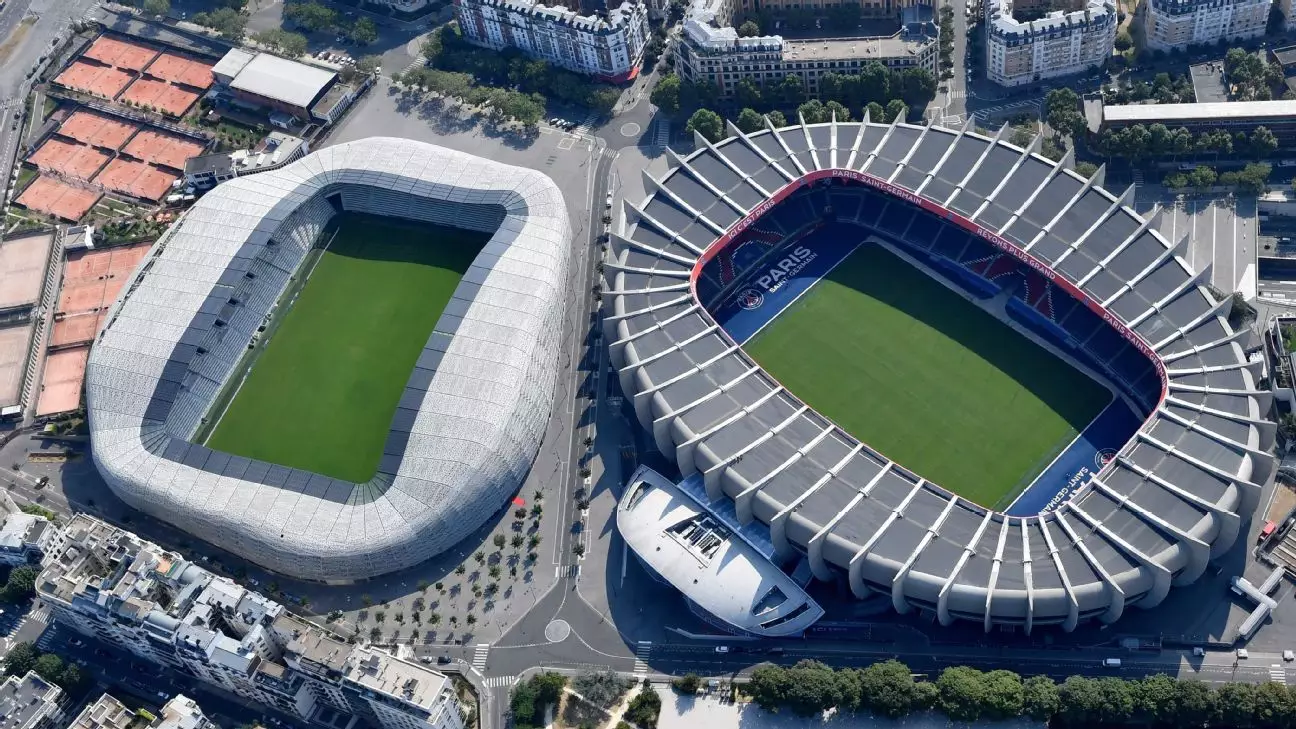In a seismic shift for the football landscape of Paris, reigning Ligue 1 champions Paris Saint-Germain (PSG) are set to welcome a new neighbor with the impending arrival of Paris FC. Announced last week, this transition will see Paris FC move into Stade Jean-Bouin, a venue that is not only steeped in history but also located a mere stone’s throw from PSG’s renowned Parc des Princes. This arrangement is significant, not merely because of the proximity of the two clubs but also due to the dynamic it’s likely to create in the already fervent Parisian football culture.
Stade Jean-Bouin has been the home of the Stade Francais rugby union team, which has agreed to a groundshare arrangement with Paris FC starting in the 2025-26 season and lasting at least through 2029. This arrangement positions Paris FC as PSG’s next-door neighbor, creating an intriguing subplot for local football fans who anticipate the blend of rivalry and camaraderie that could arise from such close quarters. With the two clubs roughly separated only by the width of Rue Claude Farrere, this setup is poised to usher in a new era of local footballing narratives.
Analyzing the implications of this setup invites comparisons to other instances in football where clubs have found themselves living in close quarters. In world football, stadium proximity can foster either intense rivalries or cooperative atmospheres. Take, for instance, the historic London rivals Chelsea and Fulham, who, despite their geographical closeness in the borough of Hammersmith and Fulham, have carved out distinct identities over the years, creating a palpable competitive aura.
In this regard, the impending arrival of Paris FC at Stade Jean-Bouin creates a canvas steeped not just in the allure of proximity but also in rivalry. Football clubs sharing close geographic ties often lead to electrifying match atmospheres—ones that resonate with local culture and community pride. With Paris FC recently playing approximately five miles away at Stade Sebastien Charlety, this drastic reassignment brings its own set of expectations and excitement.
To contextualize the Parisian rivalry, we can look at several other famous football neighbors. For example, in the Greek football scene, PAOK Salonika and their cross-town rivals Iraklis are situated barely blocks apart in Thessaloniki. Similarly, in the vibrant city of Buenos Aires, the infamous Avellaneda derby features Independiente and Racing Club, separated only by a few streets. These rivalries are pitted against a backdrop of passionate fan bases, heightening not only local pride but also the stakes in each match.
Closer to home, Nottingham boasts the two closest senior grounds in English football—Nottingham Forest and Notts County—situated mere meters apart, with the River Trent serving as the natural boundary. This physical closeness breeds an intense rivalry that is rich in history. The approach of Paris FC into Stade Jean-Bouin augurs a similar dynamic, promising unique matchdays that could redefine local football fixtures.
The Future Landscape of French Football
The position of Paris FC in Ligue 2 and their aspirations for promotion make this rivalry even cooler to ponder. With a potential all-Paris derby looming on the horizon, fans from both sides are likely to see their loyalties put to the test should Paris FC make it to Ligue 1. This kind of scenario not only elevates the stakes for each match but also garners more significant attendance and interest from both media and fans alike, culminating in a vibrant local football culture.
Moreover, the strategic timing of this transition could not be more perfect. With Paris FC driven by the ambition of a top-flight promotion, they may just inject new life into what has traditionally been an unidimensional narrative dominated by PSG. With PSG dominating headlines and accolades in recent times, the ascendance of a neighbor could bring about fresh rivalries and highlight the significance of local talent and alternative narratives in French football.
As we look towards the future, PSG and Paris FC’s geographical closeness is set to create one of the most exciting and closely watched rivalries in professional football. The potential for unexpected outcomes, community engagement, and festive atmospheres during match days will undoubtedly capture the essence of Parisian pride. While the world of football is no stranger to geographically close clubs, the unique cultural dynamics of Paris add layers to what is forecasted to be an exhilarating football chapter. With anticipation building, all eyes are now on how this rivalry unfolds in the upcoming seasons, potentially reshaping the landscape of French football forever.

